Dr. Utr. Iur.
Frank
Van den Broeke

To book an authorised guided tour with me: .... Click here
Wine & Dine: ... Click here
Where to buy your tickets ... ? Click here
It is indeed so that the untrained outsider (like me) is often wrong, but he is also constrained and every once in a while may stumble onto a truth or perspective missed by the experts. We all know that history is written by the victors. And that is what we have to keep in mind, approaching history.
In 2014, I was touched by Garth Callaghan, a dying father of a little daughter Emma, who daily writes little messages on the napkins for her lunch, encouraging her doing good. One of them happens to be the title I choose years ago to start my articles: Every day is the First day of the rest of our lives. Every day we have the choice to do good, to forgive somebody, to repent, meeting somebody, discovering something, opening our eyes to something new. That keeps me going on to write my articles and to meet new friends during my guided tours. The interpretation by Kamakawiwo'ole of the famous song "over the rainbow". pushes me to look further than what eyes can meet.
Would there be a time-machine, I rather would like to return to the Renaissance. Living at the court of Cosimo dé Medici, or being a friend of the inner circle of Erasmus of Rotterdam like Thomas More, knowing Leonardo da Vinci or Michelangelo and all those others, to many to mentioning them, would be one of my greatest pleasures. It was the time in which the “Arts” floriated. Still, in many languages we are using the division of neoplatonic philosopher Anicius Manlius Severinus Boethius (died in 526) of the arts: Arte di musica, di astrologia, alchemia, geographia, pittura, architettura, poesia a.s.o.
And the Artist of the Renaissance, was the man who could play as many of those the arts as possible.
Truth is that the knowledge of people in that era was inferior to the specialized approach of today. But it also made that they were more aware of what was going on in the other fields surrounding them. We know the multitude of “Arts” of a man like Leonardo. But I wouldn’t call him a scientist. Hardly any of his inventions worked. From this point of view, I would never call Leonardo da Vinci a real scientist. He was merely interested in “arts”.
Look at his bike or submarine. Why we had to wait until the 19th century before we saw the first bike on the market? The missing part was the gear change. Leonardo’s bike was a lovely bicycle for going downhill in Tuscany; the problems arrived going uphill. When in the 1860’s they made the bicycle as shown above, the difference in the seize of the wheels created the gear. The reason that we had to wait until the 19th century is that most people thought: "if the big Leonardo can't find a solution, nobody can !!!" When in the 19th century the first bycicle came on the market, it doesn't look like the one we have today, but at least it worked: having the peddles on the big wheel, it was always in the first gear ! In 2015 we are celebrating 200 yrs that Napoleon Bonaparte was defeated by the Duke of Wellington in Waterloo. Can you imagine that he would have the use of a biclycle? He would have achieved his goal in Russia in time !!!
It seems that only Raphael in the "Room of the Segnature" in the Vatican understood the real value of Leonardo, by giving Plato the face of Leonardo da Vinci. Plato, the man of the ideas ... not of the physics like Aristotle. And indeed, Leonardo was full of ideas:
The Renaissance really took off when in 1439, Cosimo de Medici managed to buy a lot of books of the library in Constantinople. It would be the beginning of the Laurentian Library. Just in time, because a few years later Constantinople was sacked by the Muslims. Humanists were eagerly reading those books, which hold an enormous source of information of human knowledge of the Greek and Roman world. All kind of information that was lost in the West after the collapse of the roman empire. Copernicus got the intuition that the earth is turning around the sun, even he could not prove it. We have to wait until there was Gallileo Gallilei for receiving proof. Studying those books was Art for Art. As soon Leonardo had made a design, he lost some interest in it and went over to the following art. The designs of his apparatus for the defense of Florence convinced the city to make Leonardo responsible. Florence was sacked after three days. Nothing worked properly. It’s only with the arrival of Brunelleschi or a Michelangelo that the arts move from merely art to science. It became commune that a painter (a.e. Pietro da Cortona) became also architect. Today, unfortunately, arts are reduced to the mere specialized matter. Maybe one of the reasons is that “Science” overtook “Arts”. The whole discussion if Leonardo was as scientist or artist has for me to do with the philosophical discussion between Plato and Aristotle as I further will develop in my article on the Vatican Museum.
Most of the scientists today, concentrated around one specific problem, are loosing the interaction between the Arts. Trough my articles, I would like to try to restore the link between the different Arts and showing you that inter-century and interdisciplinary recurrences can help us to clarify our views about what is going on in our days and in that way, maybe helping us to avoid mistakes of the past in the future. It is hopeful to see that modern scientists are returning to that renaissance approach of the Arts. Problems of today, like Global warming, have an interaction with climate, social life, migration ect., and than it’s good that different disciplines are sitting around the same round table seeking solutions. Look to the left how the same golden ratio appears in different disciplines
Therefore, I kindly request my readers, if you have a remark or dissenting opinion on the views expressed in my articles, please feel free to comment. Every article gives you the opportunity to do so. I’m especially asking to inform me about books that I should read to refine my articles or to find websites that I have to visit. This is not Wikipedia! Nonetheless, Your comments can make this only better.
Note: the words in in Cayenne Red are taking you to hyperlinks inside my website or to an external link. During the lecture of each article, you will also be enabled to listen to music. The music is chosen as an integration on the lecture of the articles. Enjoy your stay with me.
If you want to know more about myself, please click here: "About me". There you will also find my coordinates.
Frank

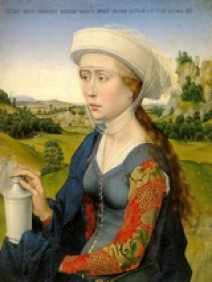
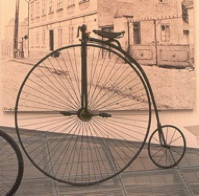
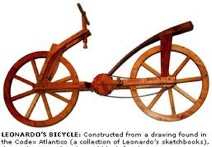

I always was fascinated by the different Utopias written over the centuries. The “civitas Dei” of Agustinus, “Utopia” of Thomas More or “Erewhon” of Samuel Butler, Looking Backwards of Bellamy and many more. And they influenced a great deal of my opinions. What they have in common is that they look at the world that surrounds them with a different eye, and often, without offending, criticizing the society of their time. Just not taking for granted the obviousness of an existing world.
An article on economics of today can make me to reflect on similar situations in the past, and past can be present. Just return to the roman age when in the lifetime of the first emperors, a city of 100.000 inhabitants becomes a city of one million; don’t you think there was a problem with garbage, housing, traffic, inflation, food supply, water? And nonetheless, even if history is moving on, the human factor with his greediness, love, intrigue and pain remained quite invariable. And we can learn lessons of them. This is what I mean by Applied History: the explicit attempt to illuminate current policy challenges by analyzing historical precedents and analogues. As Kissinger put it, “History is not … a cookbook offering pretested recipes. It teaches by analogy, not by maxims.” History “can illuminate the consequences of actions in comparable situations.” But—and here is the key—for it to do so, “each generation must discover for itself what situations are in fact comparable.” “The longer you can look back, the farther you can look forward.”
Welcome !!
to a weblog of Applied History

Two layers above each other: Plato in the School of Athens in the Vatican, and a selfportrait of Leonardo da Vinci
Cosimo de Medici

Consider to click on the icon and leave a review on tripadvisor, if possible
Suggest in your review to Google or to search in TripAdvisor my name in case they want to contact me:
frank van den broeke
so that others, who like a tour with me, can find me !!

“Though he wrote books on Theology, C.S. Lewis denied he was a theologian.
In that spirit I deny I am an historian though I write on History.”
Mark David Ledbetter, America’s forgotten history
Pictures with a red frame are opening in a Popup frame
.... try the Pantheon below

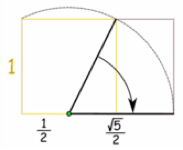

The Golden Ratio in Architecture ... and in Nature ... and in almost everything that surrounds us daily !!
"Applied History" will be red line through my articles, combined with what I call: "Interdisciplinary recurrences"

Augustus Prima Porta
Vatican Museums
Works of Mercy
Vatican Pinacoteca
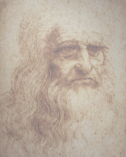
This Website contains copyrighted material the use of which has not always been authorized by the copyright owner. Such material is made available in an effort to advance understanding of country or topic discussed in the article. This constitutes 'fair use' of any such copyrighted material as provided for in section 107 of the US Copyright Law. In accordance with Title 17 U.S.C. Section 107, the material on this site is distributed without profit. If you wish to use copyrighted material from this site for purposes of your own that go beyond 'fair use', you must obtain permission from the copyright owner. If you are the copyright owner and would like this content removed from factsanddetails.com, please contact me.
G.K. Chesterton makes this following statement:
“When Christ at a symbolic moment was establishing His great society. He chose for its corner-stone neither the brilliant Paul nor the mystic John, but a shuffler, a snob, a coward- in a word, a man. And upon this rock He has built his Church, and the gates of Hell have not prevailed against it. All the empires and the kingdoms have failed, because of this inherent and continual weakness, that they were founded by strong men and upon strong men. But this one thing, the historic Christian Church, was founded on a weak man, and for that reason it is indestructible. For no chain is stronger than its weakest link.”
This is what religion is all about ...... the Saint is the prisoner: Whatever you did to one of those ...





